
LED ceiling lights have become increasingly popular in recent years due to their energy efficiency, long lifespan, and versatile design options.
In this article, we will explore what LED ceiling lights are, how they work, and the benefits they offer. We will also discuss the drawbacks of using LED ceiling lights, compare them to other types of lighting, and provide factors to consider when choosing the right LED ceiling lights for your space.
Stay tuned to find out if LED ceiling lights are a good choice for you.
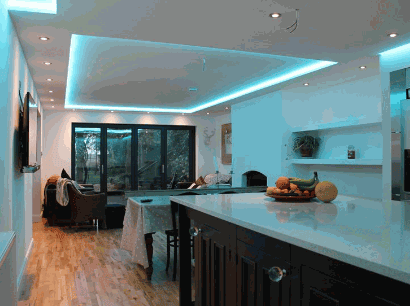
Table of Contents
LED ceiling lights are fittings that are mounted on ceilings and utilise LED technology to provide illumination in various settings such as bedrooms, kitchens, and bathrooms. These lights offer a modern and energy-efficient lighting solution compared to traditional options.
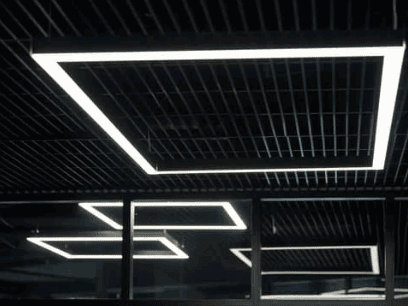
LED ceiling lights operate by utilising LED technology, which converts electricity into light through the movement of electrons in a semiconductor material. When electricity flows through the LED, it emits photons that produce visible light, resulting in efficient and long-lasting illumination.
One of the key advantages of LED ceiling lights is their energy efficiency. Unlike traditional incandescent bulbs, LEDs do not waste energy through heat production, making them more environmentally friendly and cost-effective in the long run. This energy-saving characteristic of LEDs stems from their ability to emit light in a specific direction, minimising light loss and maximising brightness.
LED technology boasts a significantly longer lifespan compared to conventional lighting sources. LEDs can last up to 25 times longer, reducing the frequency of replacements and maintenance costs. This durability is attributed to the absence of filaments or glass components that are prone to breaking in traditional bulbs. LED ceiling lights are also known for their instant brightness and dimmability, allowing users to adjust the light intensity to suit different activities and moods.
Due to these innovative features, LED ceiling lights have become the preferred choice for residential, commercial, and industrial lighting applications, providing superior performance, energy savings, and longevity.
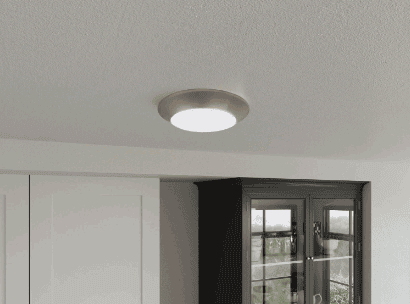
LED ceiling lights offer numerous benefits, including exceptional energy efficiency, extended lifespan, eco-friendliness, and versatile design options. These lights provide a reliable and sustainable lighting solution for diverse applications.
One of the key advantages of LED ceiling lights is their energy efficiency. They consume significantly less power compared to traditional lighting sources, leading to reduced electricity bills and lower carbon emissions. The extended lifespan of LED lights means they require less frequent replacement, contributing to cost savings and reduced waste. In terms of environmental benefits, LED lights are free from harmful substances like mercury, making them an eco-friendly lighting choice.
Find out more: What Are The Advantages Of LED Lighting
Energy efficiency is a key advantage of LED ceiling lights, as they consume significantly less energy compared to traditional lighting fittings. LED lights can be paired with efficient drivers to optimise their operation and reduce overall energy consumption.
LED ceiling lights have become a popular choice for those looking to decrease their energy usage and environmental impact. The drivers, which regulate the power supply to the LEDs, play a crucial role in enhancing the efficiency of these lights by maintaining a consistent and steady flow of electricity.
By incorporating smart controls and sensors, such as motion detectors or daylight sensors, LED ceiling lights can further optimise their operation by adjusting brightness levels based on occupancy and natural light availability. This dynamic feature not only contributes to energy savings but also prolongs the lifespan of the LEDs.
LED ceiling lights are known for their long lifespan, outlasting traditional lighting sources by a significant margin. Their reliability and extended service life make them a durable and cost-effective lighting solution.
Along with their remarkable longevity, LED ceiling lights require less frequent replacements, reducing maintenance costs and hassle for homeowners or businesses. The economic benefits of choosing LED lights, such as those offered by Aura, are further amplified by their energy efficiency, leading to lower electricity bills over time. Their consistent performance and reduced environmental impact also contribute to their growing popularity in both residential and commercial settings.
LED ceiling lights contribute to environmental sustainability due to their low energy consumption and eco-friendly design. These lights are often built using modular units that enhance their sustainability and recyclability.
The manufacturing process of LED ceiling lights focuses on reducing carbon footprint and waste generation, aligning with the principles of sustainable production. JCC LED lighting models, for instance, incorporate innovative technologies like dimmable features and sensors to further optimise energy usage.
The long lifespan of LED lights minimizes the need for frequent replacements, reducing overall material consumption and waste generation. These lights emit less heat, which not only saves energy but also contributes to a more comfortable indoor environment, thus promoting energy efficiency and reducing greenhouse gas emissions.
LED ceiling lights offer unparalleled versatility in design, providing creative freedom to designers and homeowners. These fittings come in a wide range of styles and configurations, allowing for customised lighting solutions.
Whether you prefer sleek and modern designs or intricate and ornate fittings, LED ceiling lights can cater to a myriad of design preferences and themes. The Halers H2 Pro brand, for example, is known for its innovative designs that seamlessly blend functionality with style, making it a popular choice among interior designers looking to elevate their spaces. The integration of LED technology in these ceiling lights not only enhances energy efficiency but also opens up a whole new world of design possibilities.
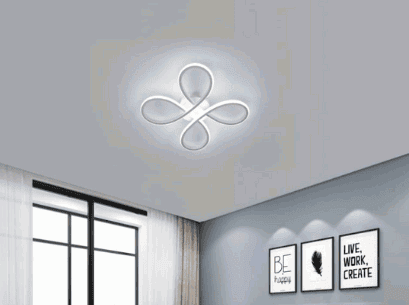
Whilst LED ceiling lights offer numerous benefits, they also come with some drawbacks, including a higher upfront cost compared to traditional lighting, limited colour options, and the potential for the glare in certain settings.
One of the main drawbacks of LED ceiling lights is the cost implication. Although they are energy-efficient and have a longer lifespan, the initial investment can be significantly higher than traditional lighting options, leading to higher upfront expenses. This can be a deterrent for those on a tight budget or looking to minimise expenses.
Another limitation of LED ceiling lights is the limited colour options available. While white light LEDs have become popular for their brightness and energy efficiency, they may not cater to those looking for warmer or more colourful illumination in their living spaces. This can restrict the creative freedom in interior design and ambiance setting.
LED ceiling lights can pose challenges related to glare in certain environments. Particularly in spaces with shiny surfaces or open layouts, the concentrated light emitted by LEDs can create unwanted reflections and glare, causing discomfort and potentially affecting visibility. This issue can be especially prominent in commercial settings where glare can impact productivity and user experience.
The higher upfront cost of LED ceiling lights is attributed to the quality of fittings and the need for occasional replacement of components. Whilst the initial investment may be higher, the long-term savings in energy and maintenance costs justify the expenditure.
LED ceiling lights are renowned for their durability, efficiency, and longevity, making them a cost-effective lighting solution in the long term. The quality of fittings used in LED lights ensures better light output and consistency, offering enhanced illumination in any space. The maintenance requirements of LED fittings are minimal compared to traditional lighting technologies like incandescent or fluorescent bulbs. LED downlights, in particular, have a longer lifespan and require fewer replacements, reducing the inconvenience and costs associated with frequent maintenance.
LED ceiling lights may have limited colour options based on the Kelvin level of the light emitted, such as white LED, warm white, and cool white variations. Whilst these options cover a broad spectrum, some users may find the colour choices restrictive.
In terms of the ambience of a room, the Kelvin level plays a crucial role in creating the desired atmosphere. For instance, white LEDs with higher Kelvin levels tend to emit cooler, bluish light, perfect for task-oriented spaces like kitchens or offices.
On the other hand, warm white LEDs, with their lower Kelvin ratings, offer a cosy, inviting glow, making them ideal for living rooms or bedrooms where a relaxing ambience is desired.
Cool white LEDs fall somewhere in between, balancing brightness and warmth, making them versatile for various settings, such as bathrooms or workspaces.
LED ceiling lights have a potential for glare, especially when operated at full brightness without dimmer switches. Glare can be mitigated by adjusting the lighting intensity to suit the environment and using compatible dimmers for optimal control.
Glare from LED ceiling lights can cause discomfort and even affect productivity in work or relaxation spaces. By incorporating dimmer switches into the lighting setup, users can easily adjust the brightness levels to create a more comfortable ambiance.
Dimmer switches play a crucial role in regulating illumination and reducing the harshness of the light, offering better control over the lighting atmosphere. This not only enhances visual comfort but also provides energy-saving benefits by allowing users to customise the light output to their specific needs.
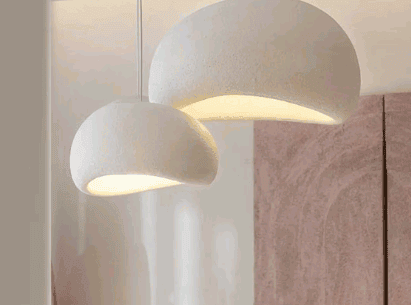
LED ceiling lights offer significant advantages over other types of lighting technologies, including incandescent, fluorescent, and halogen lights.
LED lights stand out for their exceptional energy efficiency, consuming much less power while producing the same, if not more, illumination. LED technology boasts an impressive lifespan, lasting up to 25 times longer than traditional incandescent bulbs, reducing the frequency of replacements and maintenance costs. In terms of overall performance, LED ceiling lights offer consistent brightness, colour accuracy, and instant illumination without flickering, unlike fluorescent or halogen options.
LED ceiling lights outperform incandescent lights in terms of energy consumption and longevity. Whilst incandescent bulbs like Edison bulbs have a shorter lifespan and higher energy consumption, LED lights offer superior efficiency and durability.
One of the key advantages of LED ceiling lights is their significantly lower energy consumption compared to traditional incandescent bulbs. LEDs are known for their energy efficiency, converting a higher percentage of electricity into light rather than heat, which minimises wastage and contributes to reduced electricity costs. The lifespan of LED bulbs is much longer, lasting up to tens of thousands of hours, making them a cost-effective and eco-friendly lighting solution.

LED ceiling lights surpass fluorescent lights in terms of efficiency and performance. While fluorescent lighting requires ballasts and starters for operation, LED luminaires offer instant illumination, superior energy efficiency, and a longer service life.
LED ceiling lights do not contain hazardous materials like mercury found in fluorescent lights, making them environmentally friendly and easier to dispose of responsibly. The energy efficiency of LEDs is further highlighted by their ability to emit minimal heat compared to fluorescent bulbs, reducing the strain on cooling systems and cutting down on air conditioning costs. Moreover, Collingwood LED lights are known for their high-quality construction and innovative designs, which complement modern interior aesthetics while providing optimal lighting performance.
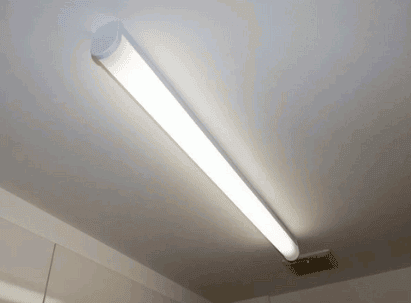
LED ceiling lights outshine halogen lights like GU10 bulbs in terms of reliability and energy efficiency.
Halogen lights have a reputation for burning out quickly, requiring frequent replacements, and resulting in higher electricity bills compared to their LED counterparts. In contrast, LED lights are designed to last much longer, saving both energy and money in the long run. Their sustainable design not only benefits the environment but also reduces the hassle of constantly changing bulbs. Brands like DM Lights have embraced LED technology, offering customers a more efficient and eco-friendly lighting option.

Several key factors should be considered when selecting LED ceiling lights, including brightness levels, colour temperature preferences, dimming capabilities, fitting sizes, and shapes, as well as the reputation of the brand and the overall quality of the lighting product.
In terms of brightness levels, it's crucial to determine the lumen output required for the specific area where the LED ceiling lights will be installed. This helps in ensuring adequate illumination without causing glare or shadows.
Colour temperature variations play a significant role in setting the ambiance of a room, ranging from warm, cosy tones to cooler, more productive lighting. Having dimming options allows for customisable lighting levels based on different activities or times of the day.
Choosing reputable brands like Studio Job ensures that you are investing in quality standards and durable fittings that will last longer and perform efficiently. It's essential to prioritise both aesthetics and functionality when making your selection.
Brightness and colour temperature are crucial considerations when selecting LED ceiling lights. The Kelvin level determines the colour output, ranging from warm white to cool white and even daylight options, allowing users to customise the ambiance to their preferences.
LED ceiling lights offer various Kelvin levels to cater to different lighting needs. Lower Kelvin levels around 2700-3000K produce a warm, cosy glow resembling traditional incandescent lighting, ideal for living rooms and bedrooms. On the other hand, higher Kelvin levels above 4000K emit a cool, energising light suitable for task-oriented areas like kitchens and offices.
The colour temperature influences the mood and perception of a space. Warmer tones create a welcoming and intimate atmosphere, while cooler tones enhance focus and productivity. The ability to switch between different colour temperatures is beneficial for creating versatile lighting settings to suit various activities and preferences.
Dimming capabilities enhance the versatility of LED ceiling lights, allowing users to adjust the light intensity according to their preferences. Utilising dimmer switches provides control over the illumination levels and creates the desired ambiance in different settings.
Having the ability to dim LED ceiling lights is particularly valuable in spaces where versatility is key, such as living rooms, bedrooms, or restaurants. With the option to adjust the brightness, individuals can create a cosy atmosphere for relaxation or increase the light output for tasks that require more focus.
Dimmer switches play a crucial role in these scenarios by allowing users to fine-tune the lighting to suit specific activities or moods. This level of control can significantly impact the overall feel of a room, enhancing comfort and functionality.
The size and shape of LED ceiling lights play a crucial role in their compatibility with different spaces and applications. Selecting fixtures that align with the room's layout and design preferences ensures optimal operation and aesthetic appeal.
Consider the dimensions of the room when choosing LED ceiling lights, ensuring that the size of the fixtures complements the space without overwhelming it. Proper sizing helps in creating a balanced and harmonious lighting scheme throughout the room. The shape of the fixtures can influence the distribution of light and the overall ambiance of the space. Rectangular or circular designs may work better in certain settings than others, depending on the desired lighting impact.
When choosing LED ceiling lights, considering the brand and quality is essential to ensure reliability and performance. Reputable manufacturers like Philips Lighting and Halers H2 Pro offer superior design options and dependable products that meet high-quality standards.
Philips Lighting, a renowned name in the lighting industry, is known for its innovation and cutting-edge technology. Their LED ceiling lights not only provide energy efficiency but also offer durability and style. With a focus on sustainability and user experience, Philips Lighting ensures that its products not only illuminate a space but also enhance its aesthetics.
Halers H2 Pro, on the other hand, prides itself on delivering premium quality lighting solutions that cater to various needs. Their attention to detail and commitment to creating products that blend functionality with elegance makes them a popular choice among consumers looking for reliable LED ceiling lights.

LED ceiling lights emerge as a favourable choice in the light fitting market due to their energy efficiency, reliability, and innovative designs. The availability of LED-ready fittings further enhances the appeal of LED lighting solutions for various residential and commercial settings.
LED ceiling lights have become increasingly popular as they offer exceptional energy efficiency, consuming significantly less power compared to traditional lighting options. The long lifespan of LEDs not only reduces maintenance costs but also contributes to a more sustainable environment, aligning with the growing focus on eco-friendly practices. The innovative designs of LED fittings cater to diverse aesthetic preferences, allowing for customised lighting solutions that enhance the ambience of any space.